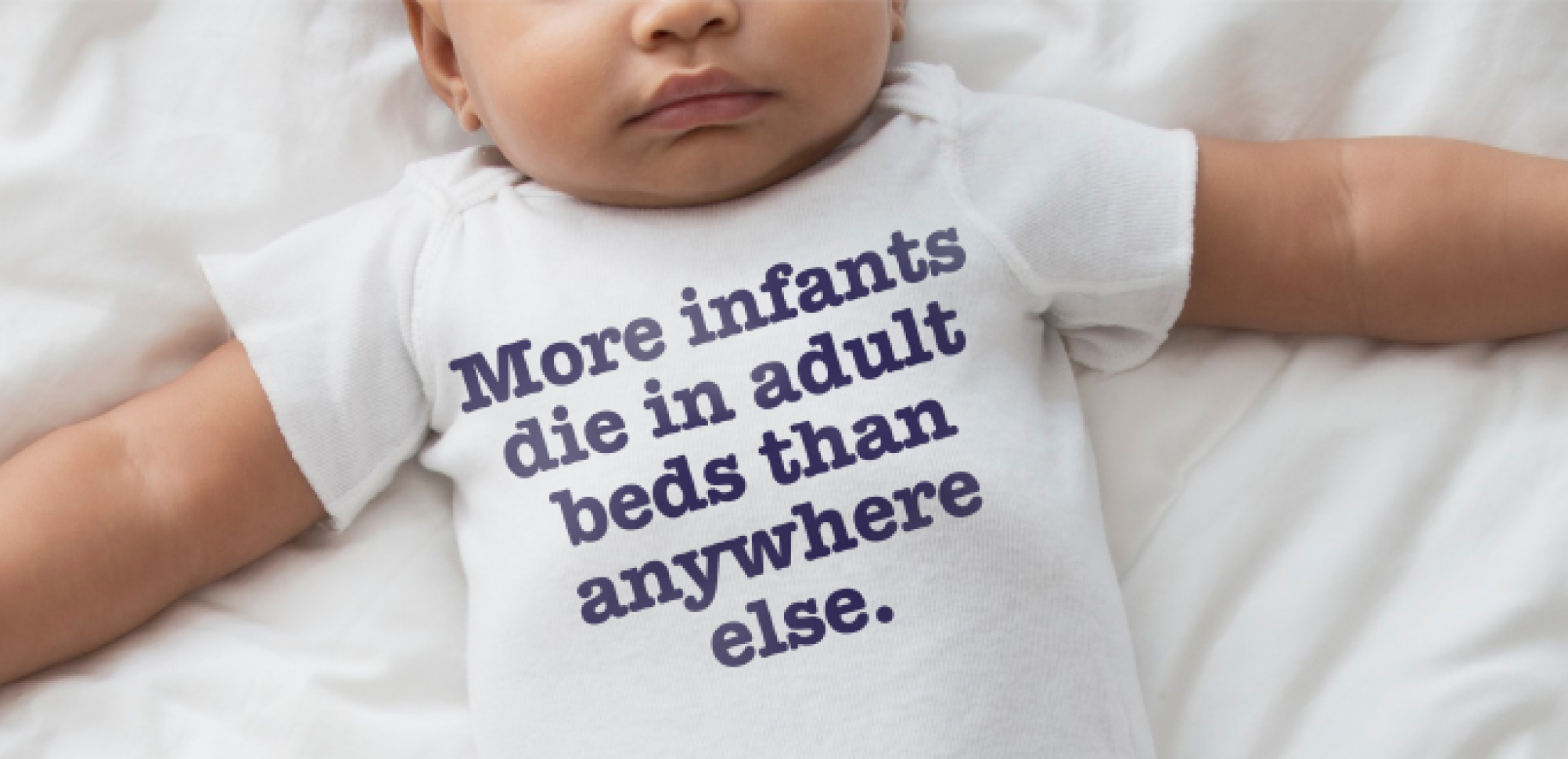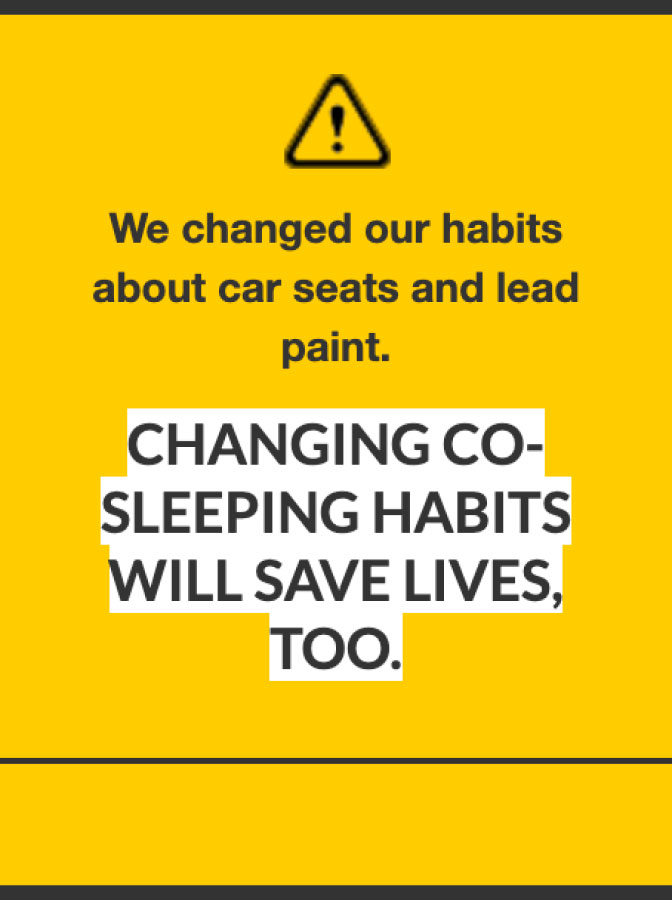
Infants are 40 times more likely
to die in adult beds than
in their own cribs
More infants die in adult beds than anywhere else. Infants can become stuck in blankets or pillows, and without control of their neck muscles, it can lead to suffocation and accidental death. Anyone sharing the bed with the infant can also accidentally roll over and suffocate the child – this includes adults, other siblings or even pets.
Unsafe sleep practices, including co-sleeping, continue to be a leading cause of preventable infant deaths in our community. In fact, about 11 Tampa Bay infants died from unsafe sleep practices in 2021.
Always follow the ABCs of safe sleep.
Babies should always be put to sleep Alone, on their Backs, and in a Crib. The ABCs of safe sleep minimize the risk of the infant suffocating, especially if they have not yet developed neck muscle control.
Place your baby’s crib or a bassinet in your room while they are an infant. It offers the same benefits of bonding without the risks.
Even one preventable child death is too many.

Prevent Needless Sleep-Related Deaths
Safe sleep saves lives:
- Never co-sleep. Co-sleeping, which means having babies sleep in the same bed as parents, siblings or caregivers, is often the cause of sleep-related infant death. When co-sleeping, a baby may suffocate if an adult unintentionally rolls on top of them or if the baby is up against a pillow or blanket.
- Bring the crib into the parent or caregiver’s room. Sharing a room with a child offers almost all of the same benefits of sharing a bed, but without the risks. Bring the baby’s crib, or a smaller bassinet, into the parents’ room for the first year of the baby’s life.
- Follow crib setup recommendations. A crib’s mattress should be firm and fit snugly inside the crib’s frame. Crib sheets should fit tightly around the mattress. A baby’s sleeping area should be free of blankets, pillows, bumper pads, stuffed animals, sleep positioners and toys.
- Be prepared for naptime and bedtime away from home. Make plans for proper sleeping arrangements like a crib or pack-n-play with a fitted sheet if your child sleeps at someone else’s home, such as with grandparents or other caregivers. Never use a blow-up mattress, recliner, couch or adult bed, which pose a significant danger to infants.
- Learn from the past. Let go of outdated practices to provide children with the safest environment possible for sleeping. Habits about car seats and lead paint have changed; it’s now time to change co-sleeping habits.
Caregivers, babysitters, relatives or anyone else caring for a baby need to know the ABCs of safe sleep, too.